
Your shopping cart is empty!

- The Sunfish is the most popular boat ever produced!
- Great for both casual sailing and racing. Explore lakes, bays, even oceans.
- Compact, lightweight, easy to transport. Ideal for one or two sailors.
- We offer customization options you won't find anywhere else!
- We have a large selection of boats, sails and parts in stock and ready to ship.

Configure your boat!
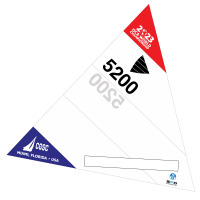

2023 Sunfish World Championship Event Boat
Here's your chance to own a 2023 ISCA World Championship event Sunfish!Boats will be delivered to Fl..
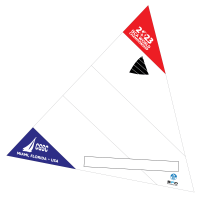
Sunfish, 2023 Sunfish World Championship Sail (NEW without sail numbers), North Sails
Own a special edition 2023 Sunfish World Championship sail. This is a brand NEW sail. Sa..
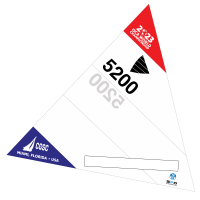
Sunfish, 2023 Sunfish World Championship Sail (Used), North Sails
Own a special edition 2023 Sunfish World Championship sail. This sail will be used for 5 days during..
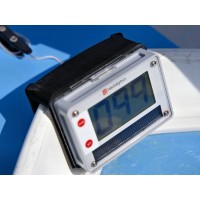
Nautalytics, Sunfish Compass, SQ1813227
Magnetic compass with wireless solar charging. Features: Countdown Timer Large Battery Backlight..
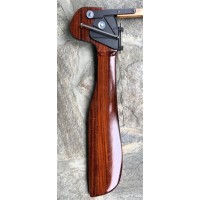
AeroSouth, FS Wood Rigged Rudder, Sunfish, FS-RDD-BLD-FOR-RIG
Improve the speed and handling of your Sunfish Sailboat with the fully rigged FS Rudder Blade. Made ..
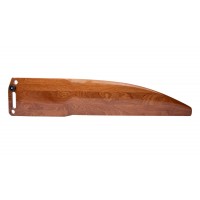
AeroSouth, Sabre Daggerboard, Sunfish, SBR-DGG-FOR-SNF
Improve the speed and handling of your Sunfish Sailboat with a Sabre Daggerboard. Made of laminated ..
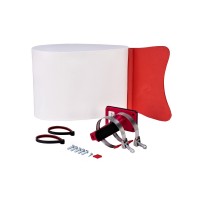
AeroSouth, Sunfish Dinghy Bob, DNG-BOB
Dinghy Bob prevents your small sailboat from turning-turtle and getting its mast or spar stuck in th..
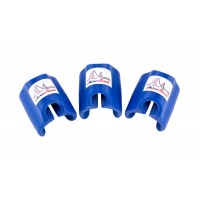
AeroSouth, Sunfish Mainsheet Hanger Clip (Set of 3, Blue), SNF-MNS-HNG-CLP-B
Set of three Sunfish mainsheet hanger clips. Made of durable PETG plastic. Fitted for the 1.5" diam..

The Sunfish combines easy rigging and manageability for a comfortable and hassle-free sailing experience. This is the sailboat loved by all. Designed in 1952 as the ultimate beach craft, the Sunfish sailboat is still a favourite with all ages. This maintenance free boat holds its resale value thanks to its robust construction, highlighted by hard chines and a flat underbody. The Sunfish can be stored almost anywhere and is a snap to car-top, making it a popular international class and easy to transport to your favourite beach for family fun.

The Sunfish has its roots planted firmly in 1947 in Waterbury, Connecticut. Friends Alexander “Al” Bryan and Cortlandt “Cort” Heyniger (the Al and Cort in Alcort) pondered, “How to put a sail on a surfboard?” The answer involved a rejected design for American Red Cross waterfront rescue surfboards, leading to the Sailfish – a lateen rigged, flat-decked, plywood marvel. In 1951, Bryan’s pregnant wife found its flat deck somewhat uncomfortable. The addition of a cockpit and widening of the hull created the Sunfish. The logo was created by Heyniger, who traced a nickel and added fins, the tail and an eye. Early wood Sailfish and Sunfish were available assembled or as kits. In 1959 the introduction of fiberglass and the low cost and ease of production led to the proliferation of Sunfish everywhere. Other improvements included aluminium spars replacing spruce, Dacron sails replacing cotton, ash replacing mahogany for tillers, resulting in increased speed, performance and reliability. Sunfish racing started almost as quickly as two or three boats came together – the first North American Championship was 1963, the first Midwinters was 1965.

1 Hull – 2 Versions
Race – A strict one design international sail class
- Adjustable downhaul
- Adjustable outhaul
- Performance ratchet block
- Performance sailcloth
Recreational – For the ones exclusively looking for the pleasure of sailing a extremely simple and fun dinghy
- Colourful sails
- Even more simple to rig
- Reduced time to water
- Sailing made simple
The Sunfish is a sailing icon
One of sailing’s best-known brands, it is unmatched in simplicity and performance making it popular for all ages and abilities. With more than 60 years in production and sailed by celebrities such as the Kennedy and Paul McCartney, the Sunfish is the most popular sailboat in history.
- SUNFISH RACE
60 ft 2 5.58 m 2
13.9 FT 4.24M
4.1 FT 1.25 M
2.11 FT 0.64 M
Beginner->Expert
Club->International
BOAT LIGHTNESS
TIME TO WATER
SKILL LEVEL

PARTS LOCATOR
RIGGING MANUAL
- Parts & Accessories
Privacy Overview
Great choice! Your favorites are temporarily saved for this session. Sign in to save them permanently, access them on any device, and receive relevant alerts.
- Sailboat Guide
Sunfish is a 13 ′ 10 ″ / 4.2 m monohull sailboat designed by Alexander Bryan/Cortland Heyniger/Carl Meinart and built by AMF Corp., Alcort, Pearson Yachts, and LaserPerformance starting in 1952.

Rig and Sails
Auxilary power, accomodations, calculations.
The theoretical maximum speed that a displacement hull can move efficiently through the water is determined by it's waterline length and displacement. It may be unable to reach this speed if the boat is underpowered or heavily loaded, though it may exceed this speed given enough power. Read more.
Classic hull speed formula:
Hull Speed = 1.34 x √LWL
Max Speed/Length ratio = 8.26 ÷ Displacement/Length ratio .311 Hull Speed = Max Speed/Length ratio x √LWL
Sail Area / Displacement Ratio
A measure of the power of the sails relative to the weight of the boat. The higher the number, the higher the performance, but the harder the boat will be to handle. This ratio is a "non-dimensional" value that facilitates comparisons between boats of different types and sizes. Read more.
SA/D = SA ÷ (D ÷ 64) 2/3
- SA : Sail area in square feet, derived by adding the mainsail area to 100% of the foretriangle area (the lateral area above the deck between the mast and the forestay).
- D : Displacement in pounds.
Ballast / Displacement Ratio
A measure of the stability of a boat's hull that suggests how well a monohull will stand up to its sails. The ballast displacement ratio indicates how much of the weight of a boat is placed for maximum stability against capsizing and is an indicator of stiffness and resistance to capsize.
Ballast / Displacement * 100
Displacement / Length Ratio
A measure of the weight of the boat relative to it's length at the waterline. The higher a boat’s D/L ratio, the more easily it will carry a load and the more comfortable its motion will be. The lower a boat's ratio is, the less power it takes to drive the boat to its nominal hull speed or beyond. Read more.
D/L = (D ÷ 2240) ÷ (0.01 x LWL)³
- D: Displacement of the boat in pounds.
- LWL: Waterline length in feet
Comfort Ratio
This ratio assess how quickly and abruptly a boat’s hull reacts to waves in a significant seaway, these being the elements of a boat’s motion most likely to cause seasickness. Read more.
Comfort ratio = D ÷ (.65 x (.7 LWL + .3 LOA) x Beam 1.33 )
- D: Displacement of the boat in pounds
- LOA: Length overall in feet
- Beam: Width of boat at the widest point in feet
Capsize Screening Formula
This formula attempts to indicate whether a given boat might be too wide and light to readily right itself after being overturned in extreme conditions. Read more.
CSV = Beam ÷ ³√(D / 64)
Although the earliest models were built of wood and offered as kits, the fiberglass version, first introduced in 1960, became the most popular recreational sailboat in history. As a result, there were many imitators.
Sunfish Builder Chronology 1952 - 1969 Alcort, Inc. (founded 1945) 1969 - 1986 AMF 1986 - 1988 Loveless & DeGarmo, dba, Alcort Sailboats Inc. 1988 - 1991 Pearson Yacht Co. 1991 - 1997 Sunfish/Laser, Inc. 1997 - 2007 Vanguard 2007 - Laser Performance Change in class rules permitted a new, slightly deeper daggerboard in the mid-1990’s.
Embed this page on your own website by copying and pasting this code.
- About Sailboat Guide
©2024 Sea Time Tech, LLC
This site is protected by reCAPTCHA and the Google Privacy Policy and Terms of Service apply.
Free Shipping Over $99* - 366 Day Returns - Dedicated Customer Support

- Call Us +1-503-285-5536
- Sign in & Register
- Recently Viewed
- One Design Parts
Sunfish Parts
Shop our limited selection of remaining Sunfish sailboat parts. Stock is limited.
- Qty in Cart

Sunfish Sail Afterglow
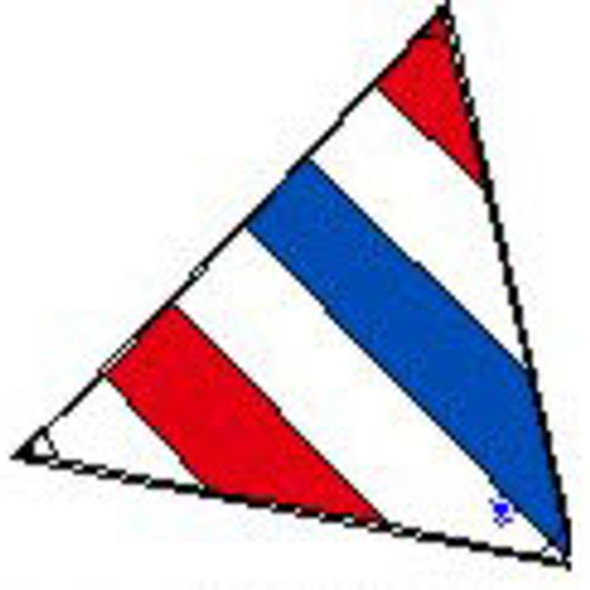
Sunfish Sail Freedom

Sunfish Mainsheet w/ Shackle

Sunfish Sail Rings

Sunfish Racing Main Halyard

Sunfish Bridle 3 Loop (Wire)

Sunfish Bridle 2 Loop (Dyneema)

Sunfish Mast Top Cap

Sunfish Boom Cap
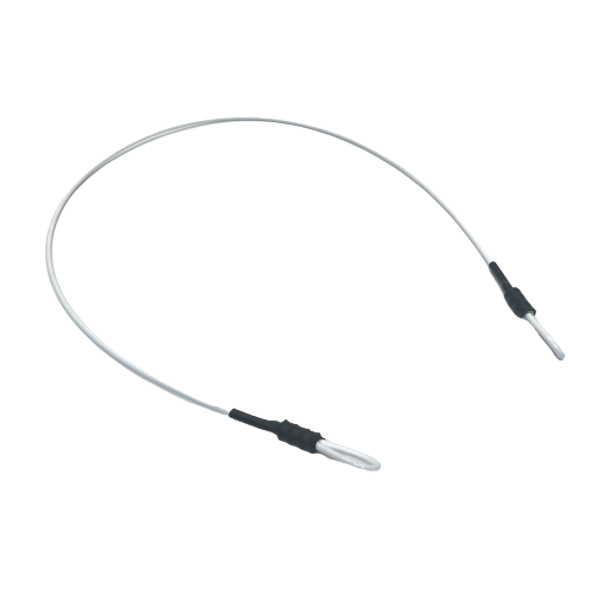
Sunfish Bridle 2 Loop (Wire)
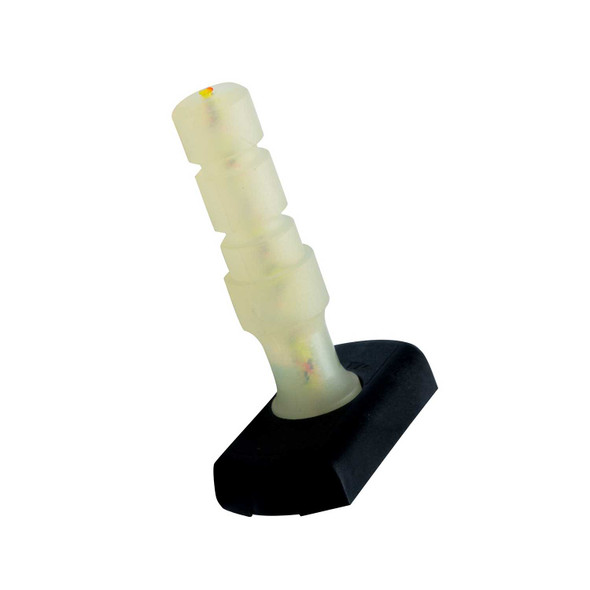
Omniflex Tiller Joint Universal w/ Rope Core

Sunfish Upper Boom
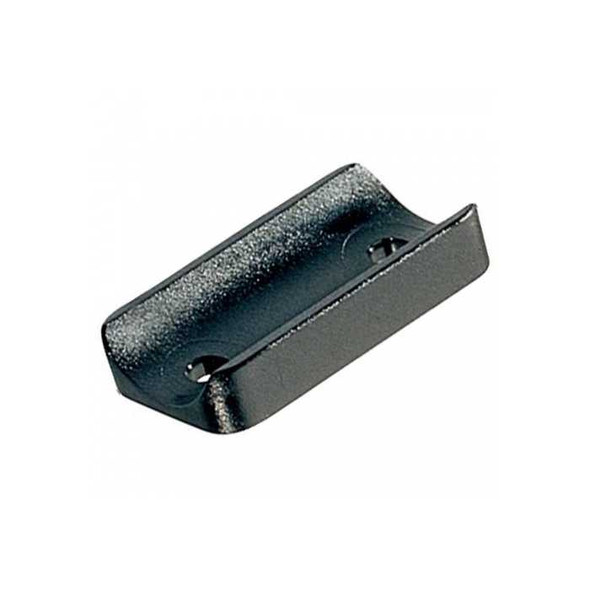
Tiller Saddle
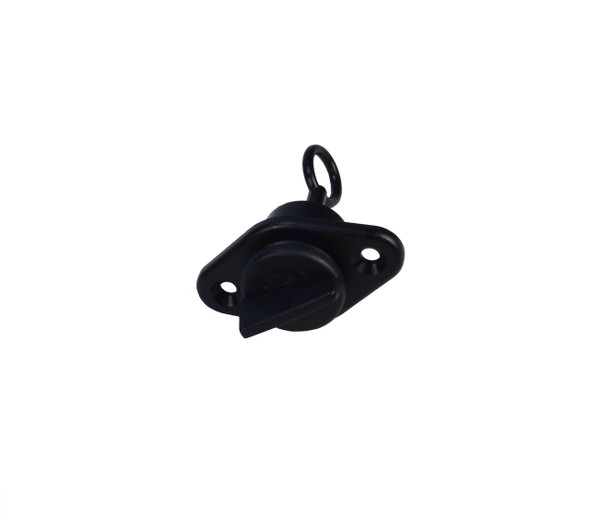
Drain Plug (Allen)
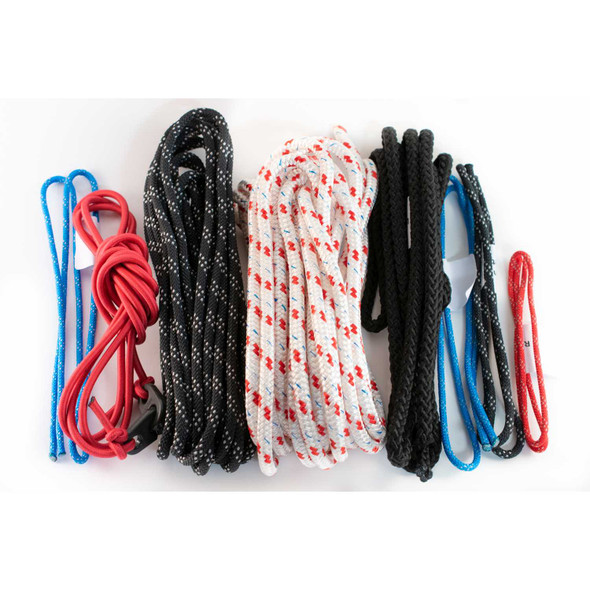
Sunfish Line Kit *Standard*

Sunfish Boom Block
- Total: items /
- Add all to cart
Adding your products to cart
Since the 1950s, there has been no better way to play on the water than in a Sunfish. Find out why we're the go to source for dinghy sailing parts and enjoy FREE SHIPPING on qualifying orders . Our staff of Sunfish and dinghy sailing experts is on hand to answer questions about rigging a Sunfish and provide tips. Let us help you get ready to own the water in your Sunfish!
Click here for Sunfish Reference Photos
Click here for Sunfish Rigging Guide
Click here for Sunfish Parts Locator
**Product Availability - Please Read**
Due to changes in the supply chain for new Sunfish and related parts, many one design Sunfish components are currently unavailable. Products we have in stock or are able to source will be listed on this page. Other products that are unavailable may be listed elsewhere on our website for reference. Our team is working hard to find new sources for Sunfish parts and will add those to our catalog as they become available. While our selection may be limited compared to previous seasons, we remain committed to serving Sunfish sailors and will continue to offer as many of the parts, rigging, sails, and accessories you need to keep your Sunfish at its best.
Sunfish Sails & Sail Rings Sunfish sails are recognized all over the world for their bright, fun colors. We stock an extensive selection of popular recreational sails in a variety of colorways plus the classic white racing sail for the hardcore Sunfish racing sailor. Don't forget to replace your sail rings when upgrading to a new sail, and add a set of tell tails for maximizing performance.
Sunfish Hull & Deck Parts West Coast Sailing is your source for hull and deck fittings for your Sunfish sailboat. Check out our selection of bailers, drain plugs, hiking straps, inspection ports, bridles, gudgeons, bow handles, and more.
Sunfish Covers Protect your Sunfish with a proper Sunfish cover, blade bag, or spar bag. Our covers are waterproof and resist both mildew and UV. They fit snuggly on your boat to provide max protection. Use a blade bag to protect your rudder, tiller, and centerboard, or pick up a spar bag to safely store and transport your mast and booms.
Sunfish Sailboat Lines & Line Kits Sunfish sail boat ropes and lines including mainsheets, sunfish halyards, outhaul lines, sunfish bridles and more.
Sunfish Rudder & Tiller Parts Keep your Sunfish heading the right direction with our selection of Sunfish rudder, tiller, and centerboard replacements and spare parts. We stock sunfish rudder parts, sunfish tillers and tiller extensions, centerboards, sunfish rudder pins and spring posts, pivot bolts, and more.
Sunfish Dollies & Trailers Keep things easy on shore with a Sunfish beach dolly or trailer. We stock dollies and trailers from Dynamic Dollies and Racks, Right-On, and Trailex, all designed specifically for your Sunfish! Sunfish dollies ship via our standard free ground shipping and are easy to assemble. Trailers can be shipping anywhere in the US or picked up fully assembled from our warehouse here in Portland, Oregon.
Subscribe To Our Newsletter
Sign up for our newsletter to receive exclusive discounts, new product announcements, and upcoming sales.

Beginner’s Guide: Learn How to Sail a Sunfish Sailboat Effortlessly
Alex Morgan
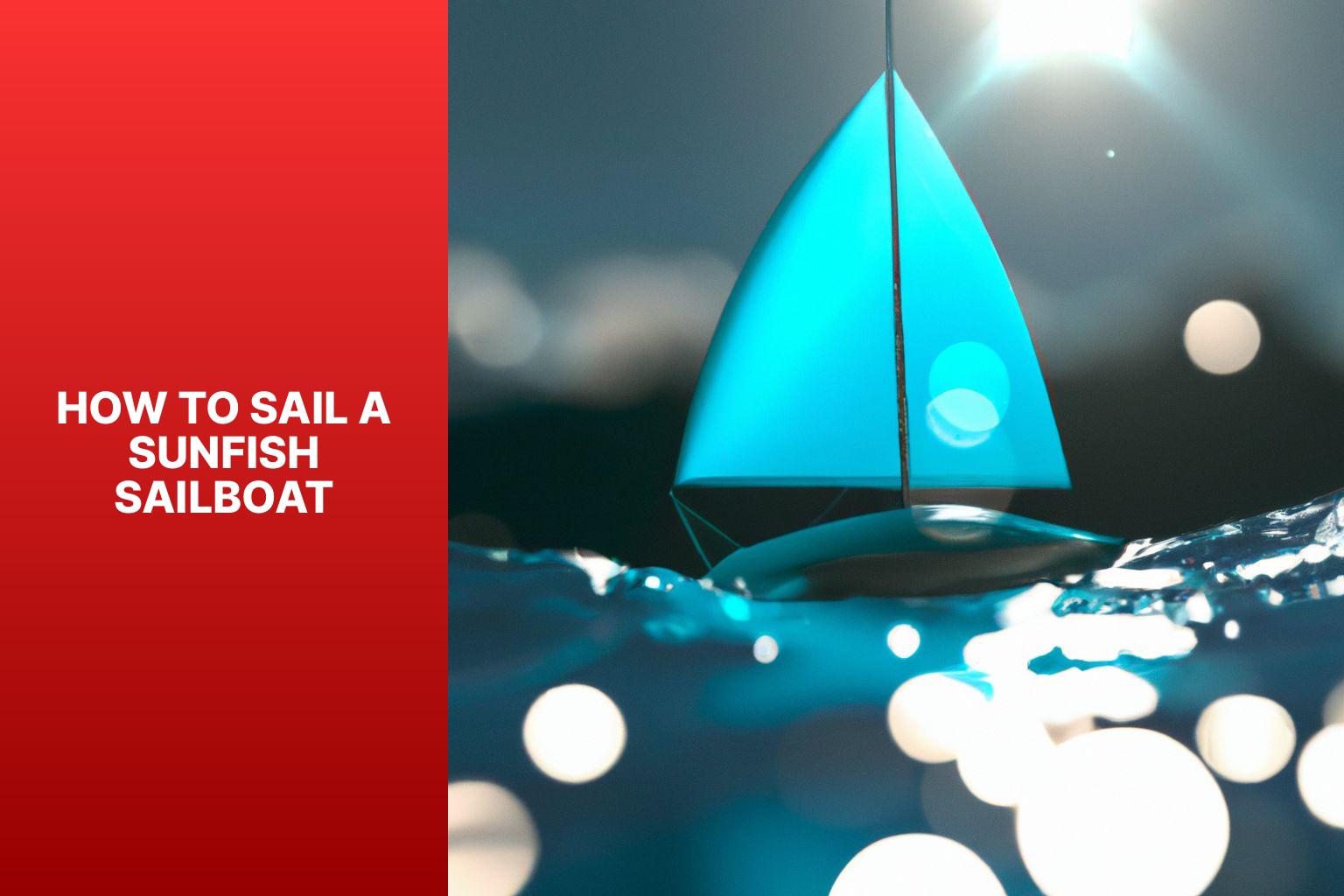
The Sunfish sailboat is a popular choice for recreational sailing enthusiasts. Its simplicity and maneuverability make it an ideal vessel for beginners and experienced sailors alike. Before setting sail, it is important to familiarize yourself with the various parts of the Sunfish sailboat. These include the hull, mast, boom, daggerboard, rudder, and sail. Understanding how these components interact and function will greatly enhance your sailing experience.
Once you are comfortable with the basics, it is time to prepare for your sailing adventure. This involves checking the weather conditions, ensuring you have the necessary safety equipment, and properly rigging the sailboat. Launching the sailboat into the water is the next step, and once afloat, you are ready to start navigating the waters.
To effectively sail a Sunfish, it is essential to learn and practice basic sailing techniques. This includes steering the boat, tacking (changing direction by turning the bow through the wind), jibing (changing direction with the wind behind), and adjusting the sail trim to optimize speed and control.
For those looking to enhance their sailing skills, advanced techniques such as hiking (leaning out to counterbalance the wind force), capsize and recovery procedures, and more can be explored.
Ensuring a safe and enjoyable sailing experience requires being mindful of safety precautions, such as wearing a life jacket, staying aware of your surroundings, and maintaining proper boat maintenance. Following these tips will help you make the most out of your Sunfish sailboat adventures.
Key takeaway:
- Sailing a Sunfish sailboat maximizes enjoyment: Sunfish sailboats are designed for a thrilling sailing experience, allowing sailors to have fun on the water.
- Being prepared is crucial for safe sailing: Checking the weather, having proper safety equipment, and correctly rigging and launching the sailboat are essential steps to ensure a safe sailing experience.
- Mastering basic and advanced sailing techniques improves performance: Learning how to steer, tack, jibe, and adjust sail trim will enhance control and maneuverability. Advanced techniques like hiking and capsize recovery will further enhance sailing skills.
Parts of a Sunfish Sailboat
When it comes to sailing a Sunfish sailboat , knowing the different parts is crucial. In this section, we’ll dive into the various components that make up a Sunfish sailboat. From the hull to the mast , boom , daggerboard , rudder , and sail , we’ll explore each sub-section and uncover the importance of these elements in maneuvering and harnessing the wind’s power. So, gear up and get ready to gain a comprehensive understanding of the essential parts that allow you to navigate the waters with grace and skill.
The hull of a Sunfish sailboat is essential for stability and buoyancy. It is made of lightweight fiberglass, allowing the boat to glide smoothly through the water. The sleek shape of the hull reduces drag and increases speed.
The hull includes the deck , cockpit , and hull bottom . The deck is the upper part of the hull for sitting or standing. The cockpit is sunken where the sailor controls the boat. The hull bottom is the curved section that contacts the water.
The hull is carefully designed for optimal performance. It is responsive and maneuverable, allowing sailors to navigate different sailing conditions easily. The hull of a Sunfish sailboat is self-bailing, efficiently draining any water that enters the cockpit .
Fun fact: The Sunfish sailboat is a popular recreational sailboat worldwide since its design in 1952. Its simple design and ease of use make it a favorite among sailors of all ages and skill levels.
The mast is an essential component of a Sunfish sailboat. It acts as the support for the sail, and it is crucial to understand some facts about the mast.
It is constructed using either aluminum or fiberglass , providing it with the necessary strength and durability. To ensure stability and proper positioning, the mast is securely attached to the sailboat’s hull using a mast step. Standing tall at around 17 feet, the mast extends vertically from the deck. One notable feature of the mast is the boom , which is affixed to hold the sail’s lower edge, allowing for better control. During sailing, the mast plays a vital role in capturing the wind and propelling the boat forward. Therefore, it is important to regularly inspect and maintain the mast to keep it in excellent condition. A key aspect of this maintenance is proper rigging, which ensures a secure attachment and alignment.
In a sailing race, a Sunfish sailboat encountered strong winds that resulted in the mast breaking in half. The sailor swiftly responded by releasing the sail and retrieving the broken pieces from the water. With the assistance of fellow sailors, a replacement mast was quickly obtained, enabling the sailor to regain strength and finish the race. This incident underlines the significance of a sturdy mast and showcases the resilience of sailors when faced with unforeseen circumstances.
The boom is an integral part of a Sunfish sailboat. It is a horizontal pole that extends from the mast and holds the lower edge of the sail. The boom effectively controls the shape of the sail and the speed of the boat.
One crucial function of the boom is to attach the mainsheet , which is utilized to command the sail. By adjusting the tension of the mainsheet, the sailor has the ability to regulate the angle and position of the boom , thereby governing the power and direction of the sail.
The boom is conveniently adjustable, enabling the sailor to modify the shape of the sail based on the wind conditions. By raising or lowering the boom , the sail can be tightened or loosened, optimizing its performance.
It is important to handle the boom with caution in order to prevent accidents. Always remain aware of the position of the boom while sailing and avoid getting hit. Properly securing the boom when the sailboat is not in use is crucial to prevent swinging and potential damage.
Daggerboard
The daggerboard, a fin-like structure located in the center of the hull, plays a crucial role in controlling the direction and stability of a Sunfish sailboat. Its primary function is to provide lateral resistance that counteracts the force of the wind on the sail, preventing drifting and maintaining the boat’s course.
Typically made of durable and lightweight materials such as fiberglass or wood , the daggerboard ensures strength while remaining easy to handle. It can also be adjusted in height, depending on the sailing conditions. Lowering it maximizes resistance in lighter winds, while partially raising it reduces resistance in heavier winds and increases speed.
To position the daggerboard, it is inserted into a slot in the center of the hull and extends beneath the boat into the water. A rope or line attached to a handle at the top allows for easy adjustment of its position. Regularly inspecting the daggerboard for damage or wear is essential, as it directly affects the boat’s performance. Always secure the daggerboard before sailing to prevent accidents or loss of control.
Proper understanding and effective use of the daggerboard will greatly enhance your sailing experience, allowing for smooth navigation in various weather conditions.
The rudder is a vital component of a Sunfish sailboat , situated at the stern. It is a vertical flat plate connected to the hull with a pivot point. The sailor manages the rudder with a tiller , a lengthy handle used to alter the boat’s direction.
The rudder provides stability and balance, counteracting the force of the wind on the sails. It assists in maintaining the boat’s course and prevents veering off track. When sailing straight, the rudder should be aligned with the boat’s keel .
Throughout maneuvers, the sailor adjusts the rudder to steer in the desired direction. Regular inspections are necessary to ensure proper functioning. Adequate control and coordination of the rudder are essential for safe and effective navigation.
Understanding rudder operation and practicing proper rudder control are critical for Sunfish sailboat sailors.
The sail is crucial for a Sunfish sailboat. It harnesses the wind’s power to propel the boat. The sail is made of durable and lightweight fabric, designed to withstand the forces of the wind. It attaches to the mast and boom, which provide structure and stability.
To control the sail, sailors use ropes known as the halyard, mainsheet, and boomvang. By adjusting these ropes, sailors can control the sail’s angle and tension, maximizing speed and maneuverability.
Proper sail trim is essential for efficient sailing. A smoothly shaped sail, without wrinkles or creases, captures the maximum amount of wind for power and speed.
Sailors should regularly inspect their sail for wear or damage. Tears or holes can significantly impact performance and should be promptly repaired. Storing the sail in a dry and protected area when not in use will prolong its lifespan.
Sail history: Sails have been used for propulsion for thousands of years, dating back to ancient civilizations like the Egyptians and Phoenicians. Sail designs have evolved with advancements in materials and technology. Today, sailboats come in various sizes and types, each with a unique sail configuration. From the Sunfish sailboat to larger racing yachts, the sail remains integral, allowing humans to harness the wind’s power and embark on incredible voyages across the seas.
Preparing for Sailing
Before embarking on a thrilling adventure of sailing a Sunfish Sailboat, it is crucial to properly prepare. In this section, we will dive into the essential steps of preparing for a successful sail. From checking the weather conditions to ensuring the presence of necessary safety equipment, we will cover all the pre-sailing essentials. We’ll explore the process of rigging the sailboat and launching it into the open waters. Get ready to set sail with confidence and enjoy a seamless experience on your Sunfish Sailboat !
Checking the Weather
Before sailing on a Sunfish sailboat, it is crucial to check the weather. This ensures a safe and enjoyable experience. Instead of using modal verbs, make factual assertions when checking the weather.
Start by reviewing the local weather forecast, including wind speed and direction, and potential storms or adverse conditions. Look for numerical details like the percentage chance of rain or wind speed in knots.
Also, observe the current weather conditions on the sailing day. Pay attention to the sky, clouds, and wind patterns. Clear sky and steady breeze are generally ideal, while dark clouds or strong gusts may indicate unfavorable conditions.
Understanding the weather will help you make an informed decision on whether it is safe to go sailing. If there are signs of thunderstorms, high winds, or dangerous weather conditions, it is best to postpone the sail.
True story: I once neglected to check the weather before sailing on my Sunfish sailboat. The sky unexpectedly turned dark, and the wind rapidly picked up. Within minutes, a thunderstorm approached, and I found myself in a precarious situation. The wind became too strong, and I struggled to control the boat. Thankfully, I managed to reach the shore safely, but it was a valuable lesson on the importance of checking the weather before sailing. Now, I always check the forecast and evaluate current conditions to ensure a safe and enjoyable experience.
Safety Equipment
Safety equipment is essential for sailing a Sunfish sailboat to protect the crew. To ensure a safe sailing experience, it is crucial to have the following safety equipment on board:
Life jackets: Each person on board needs a properly fitted and Coast Guard-approved life jacket. These life jackets keep individuals afloat and buoyant in the water.
Personal flotation devices (PFDs): In addition to life jackets, it is recommended to have readily available PFDs. These PFDs provide additional flotation and can serve as a backup in emergencies.
Whistle or air horn: A whistle or air horn is a valuable signaling device for emergencies or when assistance is required.
Throwable flotation device: It is important to have a throwable flotation device, such as a cushion or ring buoy, for assistance if someone falls overboard.
First aid kit: Accidents can occur on the water, so it is essential to keep a well-stocked and easily accessible first aid kit. This kit should include bandages, disinfectant, antiseptic cream, and necessary medication.
Bailer or bilge pump: Utilize a bailer or bilge pump to remove excess water from the boat and maintain buoyancy.
Anchor and line: In emergencies or to prevent drifting, have an anchor and line to secure the sailboat.
Navigation lights: If sailing at night or in low-light conditions, it is necessary to use navigation lights for visibility and to comply with marine regulations.
Emergency distress signals: Carry a distress signal kit with flares or other approved signaling devices to attract attention in a distress situation.
Always remember, having the proper safety equipment and knowing how to use it can significantly impact the safety of your sailing experience.
Rigging the Sailboat
Rigging the Sunfish sailboat involves the following steps:
– Attach the mast to the mast step on the boat’s deck.
– Connect the boom to the mast and secure it with a boom vang.
– Slide the daggerboard into the daggerboard trunk and secure it.
– Attach the rudder to the rudder gudgeons at the back of the boat.
– Raise the sail by attaching the halyard to the head of the sail and hoisting it up the mast.
– Attach the tack of the sail to the tack hook on the bow of the boat.
– Secure the clew of the sail to the boom using the mainsheet.
– Adjust the sail trim by tightening or loosening the mainsheet and the boom vang.
Before setting sail, make sure to check all fittings and ropes for proper tension and make any necessary adjustments. It is important to pay attention to the details and ensure everything is properly secured for a safe and enjoyable sailing experience. Regularly inspect and maintain your rigging equipment to prevent any issues while on the water.
Launching the Sailboat
Launching the sailboat is an important step. Here is a guide to help you successfully launch your Sunfish sailboat.
1. Prepare your sailboat by checking for all required equipment.
2. Attach the rudder to the stern of the boat securely.
3. Attach the daggerboard to the centerboard trunk fully.
4. Rig the sail by attaching the halyard to the head of the sail and hoisting it up the mast.
5. Attach the boom to the gooseneck on the mast and secure it with the boom vang.
6. Ensure all lines and fittings are properly secured and adjusted.
7. Push the sailboat into the water, ensuring the rudder and daggerboard are down.
8. Launch the sailboat by pushing off from the shore or using a launching ramp.
9. Once in the water, hop into the boat and position yourself in the cockpit.
10. Raise the daggerboard and rudder to desired positions for sailing.
11. Safely board the sailboat and prepare for sailing by positioning yourself comfortably.
Launching the sailboat can be an exciting experience. I remember the first time I launched my Sunfish sailboat on a calm summer day. As soon as the boat hit the water, I could feel the gentle rocking motion beneath me. With the wind in my sails and the sun on my face, I experienced a sense of freedom and adventure. Launching the sailboat was the start of an amazing day on the water, filled with the thrill of sailing and the beauty of nature surrounding me. It was a memorable experience that ignited my passion for sailing. So, get out there, launch your sailboat, and embark on your unforgettable sailing journey!
Basic Sailing Techniques
When it comes to sailing a Sunfish sailboat, mastering the basic sailing techniques is key . In this section, we will dive into the essential skills you need to navigate the waters with confidence . From steering to tacking , jibing , and adjusting sail trim , we’ll explore each sub-section to equip you with the knowledge and expertise to handle your Sunfish sailboat like a pro . So grab your life jacket and let’s set sail into the world of basic sailing techniques!
Steering a Sunfish sailboat involves understanding the techniques and principles.
Control the steering by using the tiller connected to the rudder at the stern of the boat.
To turn left, push the tiller to the right. To turn right, push the tiller to the left.
Small adjustments to the tiller create subtle changes in direction, while larger movements lead to sharper turns.
Consider the wind direction and force , as they will affect the boat’s steering. Adjustments may be necessary in different wind conditions.
Suggestions to improve steering skills:
Practice regularly in different wind conditions to become more familiar with how the boat responds to your steering.
Experiment with different tiller angles to find the most effective control for your sailing style .
Learn from experienced sailors and apply their techniques in your own sailing.
Develop balance and body positioning to maintain stability while steering the boat.
Continuously assess and adjust your steering to maintain a straight course or navigate turns smoothly.
Tacking is a sailing technique used to change direction when sailing against the wind. It involves turning the sailboat’s bow through the wind, allowing the sail to fill on the opposite side. To execute a successful tack , follow these steps:
1. Steer the sailboat upwind with the wind coming from either side.
2. Release the main sheet to slacken the sail as you initiate the turn.
3. As the bow starts to turn, quickly move to the opposite side of the sailboat.
4. Once on the opposite side, pull in the main sheet to trim the sail to its new position.
5. Steer the sailboat through the wind, maintaining control and avoiding excessive tilting or capsizing.
6. Once the sail starts to fill on the opposite side, the tack is complete, and you can resume your desired course.
Tacking allows for efficient upwind sailing by effectively utilizing the power of the wind. It is crucial for navigating tight or narrow sailing areas. Practice and develop your tacking skills to become a proficient sailor.
is a crucial sailing technique to change direction when sailing downwind. It involves turning the boat’s stern through the wind, switching the sail to the opposite side. To jibe successfully, follow these steps:
1. Prepare for the jibe by releasing the mainsheet slightly to ease sail tension.
2. Gradually steer the boat downwind as it approaches the downwind course.
3. Once on a downwind course, quickly steer the boat further downwind while pulling in the mainsheet to bring the sail across the boat.
4. Be ready for the boom to swing across rapidly as the sail crosses over. Keep your head down and weight centered for balance.
5. Adjust the mainsheet tension to trim the sail properly for the new downwind course.
Jibing can be thrilling but demands careful execution. Maintain control of the boat and be aware of surroundings to prevent collisions or capsizing.
Fact : Jibing can be challenging in strong winds, requiring precise timing and coordination to control sail and boat smoothly. Practice and experience are key to mastering this maneuver.
Adjusting Sail Trim
- Identify the wind direction by observing flag movement or ripples on the water.
- Adjust sail trim by tightening or loosening the mainsheet. Tighten it for upwind sailing and loosen it for downwind sailing.
- Check the sail’s shape for wrinkles or flapping, and make necessary adjustments.
- Pay attention to the sail’s angle in relation to the wind ( angle of attack ) as it affects the boat’s speed and direction. Adjust trim to achieve the desired angle.
- Maintain proper balance between the boat’s hull and sail by adjusting sail trim if needed.
- Continuously reassess and fine-tune sail trim as conditions change to optimize performance.
Advanced Sailing Techniques
Mastering the art of sailing a Sunfish sailboat requires more than just basic skills. In the exciting realm of advanced sailing techniques , we will uncover the secrets behind two crucial sub-sections: hiking and capsize recovery . Get ready to discover how leveraging the power of hiking , along with the essential knowledge of capsize recovery , can catapult your Sunfish sailing prowess to new heights. So, grab your life jacket and prepare to dive into the thrilling world of advanced sailing techniques !
Hiking on a Sunfish sailboat
is a technique that allows the sailor to balance the boat and increase speed. It involves leaning out over the side of the boat to counterbalance the force of the wind in the sail. Hiking is important in strong winds and prevents the boat from tipping over.
To hike effectively, the sailor should position themselves on the windward side of the boat with their feet facing towards the centerline. By extending their body weight out over the side and holding onto the hiking strap or hiking stick, the sailor can maintain stability and control.
Hiking increases boat speed and improves the sailor’s ability to steer and maintain control. By shifting weight and adjusting body position, the sailor can react to changes in wind and wave conditions.
Note that hiking requires strength and endurance. Sailors should build up their hiking muscles through practice and conditioning. Wearing appropriate hiking gear, such as hiking boots and a hiking harness, provides added support and comfort during long sailing sessions.
Capsize and Recovery
Stay calm if your Sunfish sailboat capsizes. Hold onto the boat and wear a life jacket for safety.
During the capsize and recovery process, prioritize safety for yourself and others. Assess the situation and act accordingly.
Attempt to right the boat by pushing down on the centerboard with your weight while pulling on the daggerboard handle or the hiking strap attached to the top of the mast.
If the boat does not immediately right itself, move to the side pointing towards the sky to help it turn back upright.
If you can’t right the boat on your own, wave your arms or shout for help to attract the attention of other sailors or authorities nearby.
Once the boat is upright, ensure all equipment is secure and functioning properly before proceeding.
Practice capsize and recovery drills in controlled environments to improve skills and confidence in managing such situations. Happy sailing!
Tips for Safe and Enjoyable Sailing
When sailing, it is important to prioritize safety and enjoy the experience. Here are some key tips to keep in mind:
– Prepare by checking the weather, tides, and wind speed. It is crucial to be well-informed about these factors to ensure a safe and enjoyable sailing trip.
– Wear a well-fitting life jacket for safety. In case of any unforeseen circumstances, a life jacket can be a lifesaver.
– Familiarize yourself with the sailboat’s controls and rigging. Knowing how to operate the sailboat properly is essential for a smooth and safe sailing experience.
– Stay alert and aware of your surroundings, including other boats and changing weather conditions. Being observant is necessary to avoid any potential dangers or collisions.
– Communicate effectively with your crew using clear commands and signals. Good communication is vital for coordinating actions and ensuring everyone’s safety.
– Follow navigational rules and be respectful of other boaters and wildlife. Respecting the rules and the environment is crucial for the safety and enjoyment of everyone on the water.
– Watch out for potential hazards in the water, like rocks or shallow areas. Being vigilant and avoiding such hazards can prevent accidents or damage to the sailboat.
– Adjust your speed according to the conditions and avoid unnecessary risks. Adapting to the situation and avoiding reckless behavior is important for a safe sailing experience.
– Maintain stability and balance by distributing weight properly on the boat. Proper weight distribution is essential for the stability and maneuverability of the sailboat.
– Take breaks and stay hydrated during longer trips. It is important to rest and stay hydrated to ensure your well-being and concentration while sailing.
– Lastly, enjoy the experience while always prioritizing safety. Sailing can be a thrilling and enjoyable experience, but safety should always be the top priority.
Some Facts About How To Sail A Sunfish Sailboat:
- ✅ The Sunfish is a small, one-person single sail boat that is popular for sailing at summer camps.
- ✅ It was developed by Alcort, Inc. and first appeared around 1952.
- ✅ The Sunfish has a wide beam for stability, increased freeboard, and a foot-well for a comfortable sailing position.
- ✅ It started as a wood hull design and later progressed to fiberglass construction.
- ✅ The Sunfish is easy to learn to sail due to its simple two line rigging and crab claw sail.
Frequently Asked Questions
How do i set up a sunfish sailboat.
To set up a Sunfish sailboat, first, make sure to attach the sail to the mast using the halyard. Then, insert the mast into the mast step on the deck of the boat. Next, attach the boom to the mast and secure it with the gooseneck. Insert the center board into the trunk and attach the rudder. Your Sunfish sailboat is now ready to sail!
What is the purpose of a stopper knot on a Sunfish sailboat?
A stopper knot is used on the halyard of a Sunfish sailboat to prevent it from pulling out while on the water. This knot is tied in the tail of the halyard at the clove hitch on the gaff or top boom. The stopper knot ensures that the sail remains secure, allowing for a smoother and safer sailing experience.
Where can I learn to sail a Sunfish sailboat?
You can learn to sail a Sunfish sailboat through various methods. You can watch YouTube videos that provide step-by-step instructions on sailing techniques and rigging. Another option is to take a sailing class offered by local recreation departments, especially during the summer. US Sailing’s website is also a helpful resource to find sailing classes in your area.
What are some tips for balancing the forces on a Sunfish sailboat?
Balancing the forces on a Sunfish sailboat is crucial for maximum speed and control. To achieve this, you can adjust the sail’s center of effort by moving it in relation to the hull. Lowering the sail on the mast helps reduce heeling and allows for better control by hiking out. Adjusting the gooseneck on the boom moves the sail forward and reduces weather helm, improving control. Other controls such as the vang, outhaul, and cunningham can further tweak the sail’s center of effort and de-power the sail.
What makes a Sunfish sailboat suitable for both kids and adults?
A Sunfish sailboat is suitable for both kids and adults due to its relatively light weight and easy maneuverability. It has a wide beam, increased freeboard, and a foot-well, providing a comfortable sailing position. These features, along with the simple two-line rigging and crab claw sail, make the Sunfish easy to learn to sail. Its versatility allows children and adults of various skill levels to enjoy sailing and have fun on the water.
Where can I find vacation homes for an Ocean Isle Beach summer beach vacation?
Ocean Isle Beach offers a great selection of vacation homes, from larger homes to condos, at affordable prices and with impressive customer service. You can make bookings for 2021 Ocean Isle Beach vacations by calling 800-727-9222. The website of the provided source, https://www.williamsonrealty.com, is a resource to explore various vacation home options and accommodations.
About the author
Leave a Reply Cancel reply
Your email address will not be published. Required fields are marked *
Save my name, email, and website in this browser for the next time I comment.
Latest posts


The history of sailing – from ancient times to modern adventures
History of Sailing Sailing is a time-honored tradition that has evolved over millennia, from its humble beginnings as a means of transportation to a beloved modern-day recreational activity. The history of sailing is a fascinating journey that spans cultures and centuries, rich in innovation and adventure. In this article, we’ll explore the remarkable evolution of…

Sailing Solo: Adventures and Challenges of Single-Handed Sailing
Solo Sailing Sailing has always been a pursuit of freedom, adventure, and self-discovery. While sailing with a crew is a fantastic experience, there’s a unique allure to sailing solo – just you, the wind, and the open sea. Single-handed sailing, as it’s often called, is a journey of self-reliance, resilience, and the ultimate test of…

Sustainable Sailing: Eco-Friendly Practices on the boat
Eco Friendly Sailing Sailing is an exhilarating and timeless way to explore the beauty of the open water, but it’s important to remember that our oceans and environment need our protection. Sustainable sailing, which involves eco-friendly practices and mindful decision-making, allows sailors to enjoy their adventures while minimizing their impact on the environment. In this…
SUNFISH AND LASER SAILBOATS
The Sunfish is a sailing icon. One of sailing’s best-known brands, it is unmatched in simplicity and performance making it popular for all ages and abilities. Designed as the ultimate beach craft, this maintenance free boat holds its resale value thanks to its robust construction, highlighted by hard chines and a flat underbody. The Sunfish can be stored almost anywhere and is a snap to car-top, making it a popular international class and easy to transport to your favorite beach for family fun.
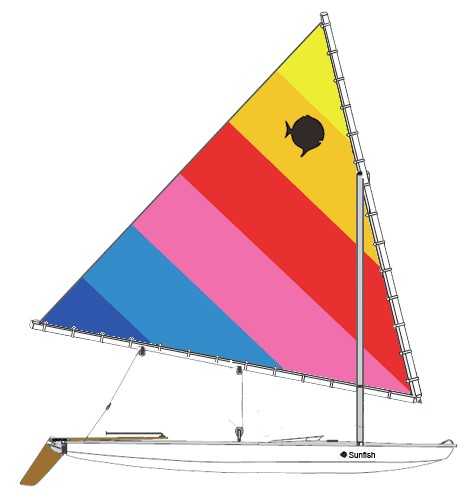
- Fiberglass hull
- Fiberglass foils
- Aluminum spars
- Class legal sail Lightweight hull
- Kick-up rudder system
- Self-bailing cockpit
- Storage compartment in the cockpit
The Laser is the world’s most popular adult racing class boat. True to box one-design standards, each Laser in the world is identical ensuring the best sailor on the water wins the race, not the boat. The Laser is a challenging boat that rewards athleticism, subtle steering and trimming techniques, as well as the tactical excellence of the sailor. The Laser is raced by young and old alike from the Club level all the way to the Olympics. The Laser comes standard as a race version.
- Ice Blue Fiberglass hull
- Harken Race upgrade Cunningham/Outhaul kit
- Harken Race upgrade Boom Vang / Kicker
- Gorilla tiller and extension
- Class legal Mark II sail
- 60mm Harken ratchet block
- Padded toe strap

Stop in and take a look at our available Sunfish and Lasers.
SUNFISH OWNERS GROUP
Sunfish Enthusiasts, Day sailors to Racers
Sunfish Owners Group is formed for all those who seek the camaraderie of sailing, restoring, racing and owning the venerable Sunfish. There is many sources of information relating to the Sunfish and this group supports ALL Sunfish owners. Membership is free.

WELCOME TO SUNFISH OWNERS GROUP
For ALL Sunfish Enthusiasts

- Dec 12, 2020
How To Rig A Sunfish Sailboat

- Dec 11, 2020
Sunfish Sailor Reacts to SUNFISH SAILING TERROR Video

Sunfish Sailors try a Vanguard 15 Sailboat
WHAT’S NEW?
Here’s What’s Happening
The Sunfish Owners Group will help bridge the gap with ALL owners of Sunfish Sailboats. Our community can come together to explore recent news and past stories. Read on to see more about what’s been happening lately, and be sure to stay up-to-date with all the latest updates.

RADICAL FS RUDDER
Oct. 7, 2020
A brand new vertical Rudder is being made specifically for the Sunfish. It will need the "newer" gudgeon bracket (which has been on sunfish for probably 40 years). The company claims it has less weather helm, weigh half as much, improve speed with less drag.
SUNFISH OWNERS GROUP WANTS YOU!
The Sunfish Owners Group's mission is to join ALL Sunfish Enthusiasts together. To share information, photos, videos, tips, tricks and

GET IN TOUCH
Thanks for submitting!
Become the Confident Skipper of Your Own Sailboat
Just what is a sunfish sailboat an overview for beginners.
- Post author: Anns
- Post published: October 10, 2022
- Post category: Uncategorized
- Post comments: 0 Comments
Introduction
Sunfish sailboats are a great way to get out on the water and enjoy the outdoors. They’re affordable, easy to learn, and fun for all ages. But it’s important to know what you’re getting into before you buy one. In this blog post, we’ll cover everything from how Sunfish boats work to accessories you might want to add when purchasing your new toy!
Sunfish sailboats are fun, affordable, and simple to learn.
Sunfish sailboats are fun, affordable and simple to learn.
A Sunfish sailboat is a great way to get started in sailing. They’re easy to store and transport, so you can take them with you on vacation or keep them at home for weekend sailing. The design is also very forgiving if you make mistakes while learning how to sail–you don’t have to worry about breaking anything when making mistakes! The tough fiberglass hulls and riveted aluminum frames make repairs pretty easy too!
A Sunfish has three components: hull, sail, and daggerboard.
A Sunfish has three components: hull, sail and daggerboard.
The hull is the body of the boat. The sail is what catches the wind to push it along. The daggerboard is a small board that keeps the boat from rolling over when sailing in rough waters or high winds.
The Hull is a one-piece design, made of molded plastic for durability.
The hull, or body of a Sunfish sailboat, is a one-piece design made from molded plastic for durability. The hull is also called the “body” in some circles.
The hull of your Sunfish sailboat will be constructed of fiberglass and resin—a material that makes it strong enough to withstand the wear and tear of many years on the water.
The Sail is made of Dacron with kevlar stitching.
The sail is made of Dacron, a synthetic fiber. The stitching is made of kevlar. The kevlar is a synthetic fiber as well. There are several types of stitches that can be used to hold the sail together, but all will do the job equally well.
The Daggerboard fills with water as it is lowered, keeping the boat from rolling over. To raise it, simply pull it out by using the loop at its top.
Oops! Click Regenerate Content below to try generating this section again.
It can be good to have additional accessories on your Sunfish sailboat. These include tiller extensions and replacement mast or hull parts in case of damage.
If you plan to sail in wide open water, a tiller extension is useful as it will give you more control over the boat. The mast and rudder are also adjustable for different conditions. If you are sailing in shallow water, a daggerboard extension is useful as this increases stability so that your boat doesn’t tip over easily (especially if there are other boats nearby).
You can also attach extra sails for when you want more speed or wind resistance.
Owning a Sunfish sailboat can be a rewarding experience!
Owning a Sunfish sailboat can be a rewarding experience! They are easy to learn, affordable and fun. The design is versatile, which makes them last forever.
The Sunfish is an open cockpit boat with a single sail mounted on a mast at the top of the boat and two or three seats inside the hull. It may have an outrigger for stability or it may not. Either way, it’s designed for one person to use and that person does not need any experience with sailing whatsoever in order to get started using their Sunfish on the water.
If you’re thinking about learning how to sail, a Sunfish is the perfect boat for you. It’s affordable, fun and easy to learn. There are so many benefits that come with owning one. For example: it can be great exercise as well as an opportunity to spend time with family or friends out on the water! If these reasons sound good then maybe now is the time for us all
You Might Also Like
Five ways to pass the time with your family without going broke, 7 rules for getting along with your roommates, leave a reply cancel reply.
Save my name, email, and website in this browser for the next time I comment.
How to Rig a Sunfish: Step-by-Step Guide to Sail Away
Imagine the gentle ripple of water, the whisper of a breeze, and the thrill of harnessing the wind to propel yourself across the water. For sailors, there’s no feeling quite like it, and the Sunfish sailboat offers the perfect vessel for such adventures.
In this comprehensive guide, we embark on a journey to help you master the art of rigging a Sunfish sailboat. Whether you’re a novice eager to set sail for the first time or a seasoned sailor in need of a refresher, this article has you covered.
The Sunfish sailboat is renowned for its simplicity, making it an ideal choice for sailors of all skill levels. Our guide will walk you through the essential steps, from setting up the mast and sail to ensuring your boat is shipshape. So, whether you’re preparing for a leisurely day on the water or gearing up for some friendly racing, read on to discover the secrets of rigging a Sunfish and unlocking the full potential of this iconic sailboat.
Introduction to the Sunfish Sailboat
Nestled at the intersection of simplicity and pure sailing joy, the Sunfish sailboat has been captivating the hearts of sailors for generations. With a history dating back to the mid-20th century, this beloved boat is renowned for its straightforward design and the exhilarating experiences it offers on the water.
For anyone looking to venture into the world of sailing, mastering the art of rigging a Sunfish is an essential skill. It’s the very foundation upon which your sailing adventures will be built. Whether you’re a novice seeking your maiden voyage or a seasoned sailor revisiting the basics, understanding how to properly rig a Sunfish is paramount for safety and a delightful time out on the water.
In this guide, we’ll embark on a journey to demystify the rigging process, step by step. By the end, you’ll not only have the knowledge but also the confidence to set sail on your Sunfish, ready to embrace the wind, waves, and the endless possibilities of the open water. So, let’s dive in and uncover the secrets of rigging the Sunfish sailboat for an unforgettable sailing experience.
Gather Your Tools and Equipment
Before you embark on the process of rigging your Sunfish, it’s crucial to ensure you have all the necessary tools and equipment at your disposal. Here’s a comprehensive list of items you’ll need:
- Sunfish Sail: The sail is the heart and soul of your boat. Ensure it’s in good condition, free of tears or significant wear.
- Mast: The mast is the vertical pole that supports the sail. It should be straight and secure.
- Boom: The boom is the horizontal spar that extends the foot of the sail. Check for any signs of damage or rust.
- Lines (Ropes): You’ll need various lines for controlling the sail, including the halyard (raises the sail), mainsheet (controls the angle of the sail), and other lines for rigging adjustments.
- Daggerboard: This board helps with stability and direction. Ensure it’s securely in place and free of damage.
- Rudder and Tiller: The rudder controls your boat’s direction, while the tiller is the handle you use to steer. Make sure they’re both functioning correctly.
- Life Jacket: Safety first! Always wear a properly fitted life jacket when sailing.
- Paddle: In case the wind dies down or you need to maneuver in tight spaces, a paddle can be a lifesaver.
- Bailer or Sponge: To keep the cockpit dry and free of water, especially if it splashes in.
- Tool Kit: A basic toolkit with pliers, a screwdriver, and a wrench can be handy for minor adjustments.
- Sunscreen and Sunglasses: Protect yourself from the sun’s rays.
- Hat and Water: Stay hydrated and shielded from the sun.
- Whistle or Horn: These are essential safety devices for alerting others in case of an emergency.
Before rigging your Sunfish, inspect all equipment for any wear, damage, or missing parts. Safety should always be a top priority, so ensure your life jacket is in excellent condition and fits snugly. Once everything is in order, you’re ready to begin rigging your Sunfish and setting sail for a fantastic day on the water.
Position the Sunfish on Land or in Shallow Water for Rigging
Before you start rigging your Sunfish, you’ll need to prepare the boat properly. Here’s how to do it:
- Choose the Right Location: Select a location on land or in shallow water that’s free from obstacles and provides ample space to work around the boat.
- Position the Sunfish: Carefully position the Sunfish with the bow (front) pointing into the wind. This is important for a smooth rigging process.
- Level the Boat: Ensure the boat is level from side to side. An uneven boat can make rigging and sailing more challenging.
- Secure the Boat: If you’re on land, make sure the boat is securely supported with appropriate boat stands or supports to prevent it from tipping or moving during rigging.
- Check the Wind: Assess the wind conditions. While it’s okay to rig in a light breeze, strong winds can make the process more difficult. If it’s too windy, consider postponing your rigging or seek help from someone experienced in handling a Sunfish in windy conditions.
- Gather Your Gear: Double-check that you have all the necessary tools and equipment nearby, as mentioned earlier.
By positioning the Sunfish correctly, ensuring it’s level, and taking wind conditions into account, you’ll set the stage for a smooth rigging process and a safe and enjoyable sailing experience.
Process of Stepping the Mast, Which Involves Attaching the Mast to the Boat’s Hull
Stepping the mast is a crucial step in rigging your Sunfish. Follow these steps carefully:
- Attach the Mast Step: The mast step is a metal fitting on the boat’s deck near the bow. Insert the bottom end of the mast into the mast step. Ensure it fits snugly and securely.
- Align the Mast: With the mast in the mast step, position it vertically. Check for any lateral (side-to-side) or forward-leaning tilt. The mast should be perfectly upright.
- Attach the Forestay: The forestay is the front rigging line that goes from the top of the mast to the front of the boat. Hook the forestay to the bow eyelet or fitting. Make sure it’s securely attached.
- Secure the Shrouds: The shrouds are the side rigging lines that keep the mast in position. Attach one end of each shroud to the eyelets on the sides of the boat, near the gunwales. The other end of each shroud should be attached to the chainplates on the sides of the mast.
- Adjust Tension: Properly tension the forestay and shrouds. The rigging lines should be tight enough to support the mast but not overly tight, as this can distort the hull. The mast should remain vertical and secure.
- Inspect All Attachments: Double-check that all attachments are secure, and there’s no slack in the rigging lines. Ensure the mast is firmly in the mast step.
Properly stepping the mast and ensuring correct alignment, tension, and secure attachments are essential for safe and efficient sailing. A well-rigged Sunfish will perform better and provide a more enjoyable experience on the water.
Attach the Boom to the Mast and the Sail to the Boom
Attaching the boom and sail correctly is vital for effective sailing. Here’s how to do it:
- Attach the Boom to the Mast: The boom is the horizontal spar that extends perpendicular to the mast. Slide the gooseneck fitting on the front of the boom onto the mast. The gooseneck should fit snugly on the mast, and the boom should rest horizontally.
- Secure the Mainsheet: The mainsheet is the line that controls the angle of the sail. Attach one end of the mainsheet to the eyelet on the back of the boom. The other end will be handled by the sailor while sailing.
- Attach the Sail to the Boom: Slide the sail’s foot (bottom edge) into the boom’s groove, starting from one end and working your way to the other. Make sure the sail is centered on the boom. Secure the sail by tightening the boom vang, a line running from the back of the boom to the mast.
- Tension the Sail: Pull the halyard line (located on the front side of the mast) to raise the sail. The sail should be taut but not overly tight. Adjust the downhaul line (attached to the tack of the sail) to control the tension in the lower part of the sail.
- Adjust the Outhaul: The outhaul line (attached to the clew of the sail) controls the tension in the sail’s foot. Adjust it to achieve the desired sail shape.
- Check Sail Shape: Stand behind the boat and look at the sail’s shape. It should be smooth and evenly tensioned, with no excessive wrinkles or creases. Make adjustments as needed.
- Secure Loose Ends: Secure any loose lines and ensure nothing is dangling or obstructing the sail’s movement.
Properly attaching the boom and sail, as well as adjusting the halyard, downhaul, and outhaul lines, is essential for sail control and efficient sailing. Ensure that all lines are free from tangles or snags, as this will help maintain control over the sail during your voyage.
Daggerboard and Rudder Installation
Inserting the daggerboard:.
- Locate the daggerboard slot on the centerline of the Sunfish hull, typically near the cockpit.
- Hold the daggerboard vertically with the tapered end facing downward.
- Insert the daggerboard into the slot, starting from the top. Ensure it slides smoothly into place.
- Continue pushing the daggerboard down until it rests securely in the slot and is fully submerged in the water. The daggerboard provides stability and prevents lateral movement when sailing.
Attaching the Rudder:
- The rudder consists of the rudder blade and the rudder head. The rudder head fits into a bracket on the back of the boat.
- Insert the rudder head into the bracket and push it down until it clicks or locks into place. There is often a pin or mechanism that secures the rudder in the bracket.
- Ensure the rudder blade is perpendicular to the boat’s centerline and extends downward into the water. The rudder controls your boat’s direction and is crucial for steering.
Checking Control Lines:
Examine the control lines associated with the rudder:
- Tiller: The tiller is the wooden or metal bar connected to the rudder head. Make sure it is securely attached to the rudder head and that it moves freely to steer the boat.
- Tiller Extension: If your Sunfish has a tiller extension, check that it is attached and functioning correctly. The extension allows you to control the rudder while seated.
- Rudder Downhaul Line: The rudder downhaul line controls the angle of the rudder blade. Ensure it is properly adjusted to your desired steering responsiveness.
Properly installing the daggerboard and rudder and ensuring the associated control lines are in good working order are essential steps before setting sail. These components play a critical role in maintaining control and stability while on the water.
Rigging the Various Lines for Sail Control, Including the Mainsheet, Outhaul, and Vang
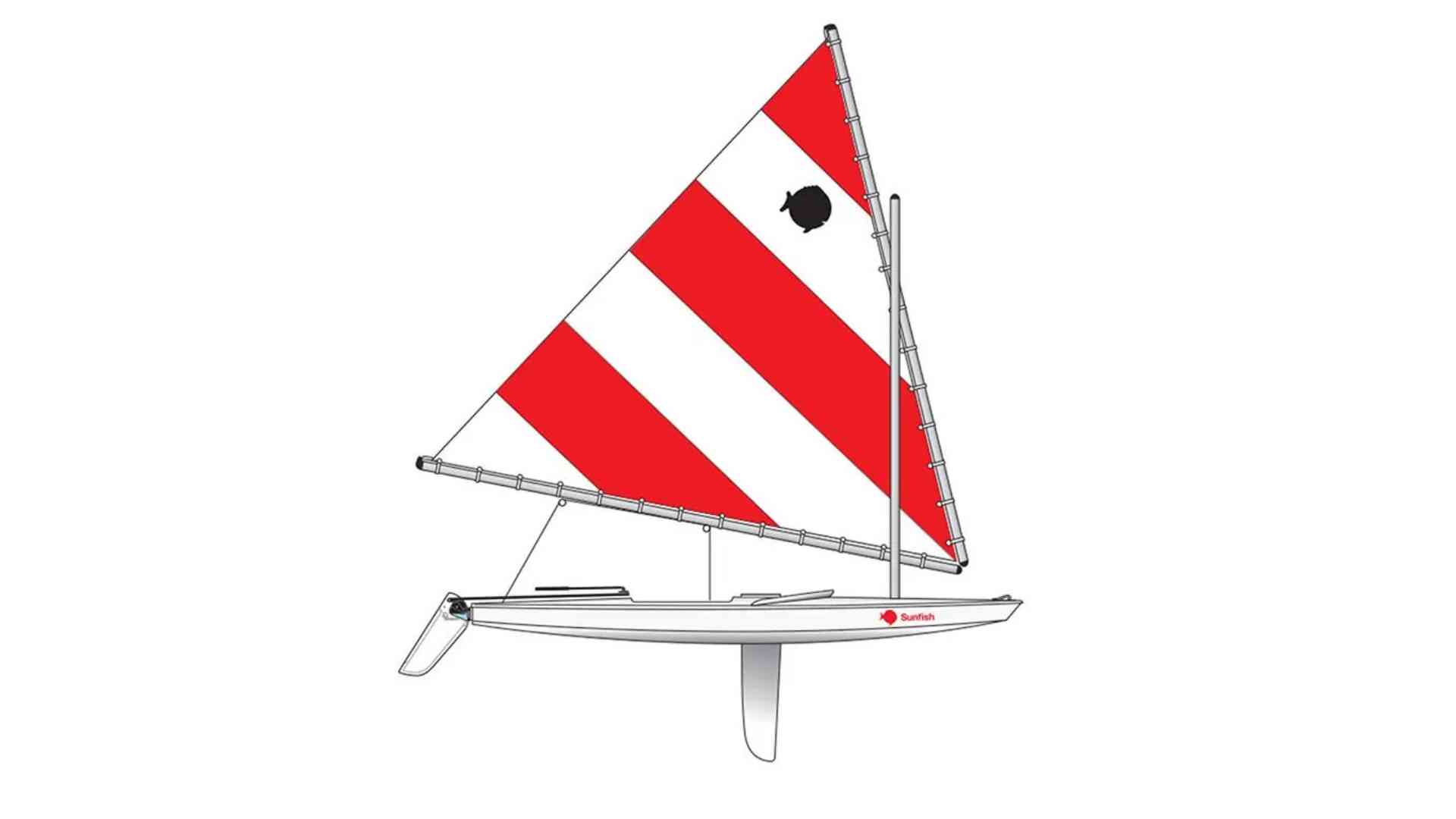
- The mainsheet controls the angle of the sail, affecting your boat’s speed and direction.
- Attach one end of the mainsheet to the aft end of the boom, typically with a bowline knot.
- Thread the other end through the mainsheet block, which is typically attached to the traveler bar on the boat’s cockpit floor.
- Bring the mainsheet line up to the sail’s clew (the lower back corner of the sail) and pass it through the aft grommet (a reinforced hole) in the sail.
- Pull the mainsheet line down, creating tension in the sail. The mainsheet should run freely through the block for easy adjustments while sailing.
- The outhaul adjusts the tension in the foot (bottom) of the sail.
- Attach one end of the outhaul line to the clew of the sail, usually through the outhaul grommet.
- Thread the other end of the outhaul line through the outhaul block or pulley on the boom.
- Adjust the outhaul to your desired sail shape and tension by pulling or releasing the line.
Vang (Optional):
- The vang controls the tension in the leech (back edge) of the sail.
- Attach one end of the vang to the gooseneck fitting on the mast.
- Thread the other end through the vang block on the boom.
- Adjust the vang to control the twist in the sail by pulling or releasing the line.
Cleating Lines:
- Many Sunfish sailboats have cleats to secure lines, allowing for hands-free sailing.
- To cleat a line, simply wrap it around the appropriate cleat and pull it tight. The cleat will hold the line in place.
- To release a cleated line quickly, pull it upward and away from the cleat.
Properly rigging and adjusting these control lines is crucial for sail control and optimizing your boat’s performance. The mainsheet, outhaul, and vang give you control over the sail’s shape, angle, and tension, allowing you to harness the wind effectively while sailing your Sunfish.
Performing Safety Checks Before Setting Sail
Before setting sail on your Sunfish, safety should always be a top priority. Here are some essential safety checks and precautions:
- Buoyancy Check: Ensure that your Sunfish is positively buoyant, meaning it will float even if swamped or capsized. Check for any hull damage or leaks that could affect buoyancy.
- Secure All Lines: Double-check that all lines, including the mainsheet, outhaul, vang, and control lines, are properly secured and free from tangles or knots.
- Equipment Condition: Inspect all equipment, such as the daggerboard, rudder, and sail, to ensure they are in good condition and properly attached., Verify that the mast, boom, and rigging are secure and free from damage or wear.
- Life Jackets: Always wear a Coast Guard-approved life jacket while on the water, and ensure that any passengers also have access to life jackets that fit them properly.
- Safety Guidelines: Familiarize yourself and your passengers with safety guidelines, such as proper body positioning in the boat and what to do in case of capsizing or other emergencies.
- Weather Check: Before heading out, check the weather forecast. Avoid sailing in severe weather conditions, strong winds, or thunderstorms.
- Emergency Gear: Carry essential emergency gear, including a whistle, paddle, bailer, and a means of communication (e.g., a waterproof phone or VHF radio).
- Float Plan: Let someone ashore know your sailing plans, including your intended route and estimated return time. This helps ensure someone is aware of your whereabouts in case of an emergency.
- Boating Knowledge: Ensure you have the necessary knowledge and skills for sailing a Sunfish, especially if you are a beginner. Consider taking a sailing course or sailing with an experienced sailor until you gain confidence.
- Stay Hydrated and Sun-Protected: Bring water to stay hydrated during your sail, especially on hot days., Protect yourself and passengers from the sun with sunscreen, hats, and sunglasses.
By prioritizing safety and performing these pre-sail checks, you can enjoy your Sunfish sailing adventures with peace of mind, knowing that you are well-prepared for a safe and enjoyable experience on the water.
Conclusion and Setting Sail
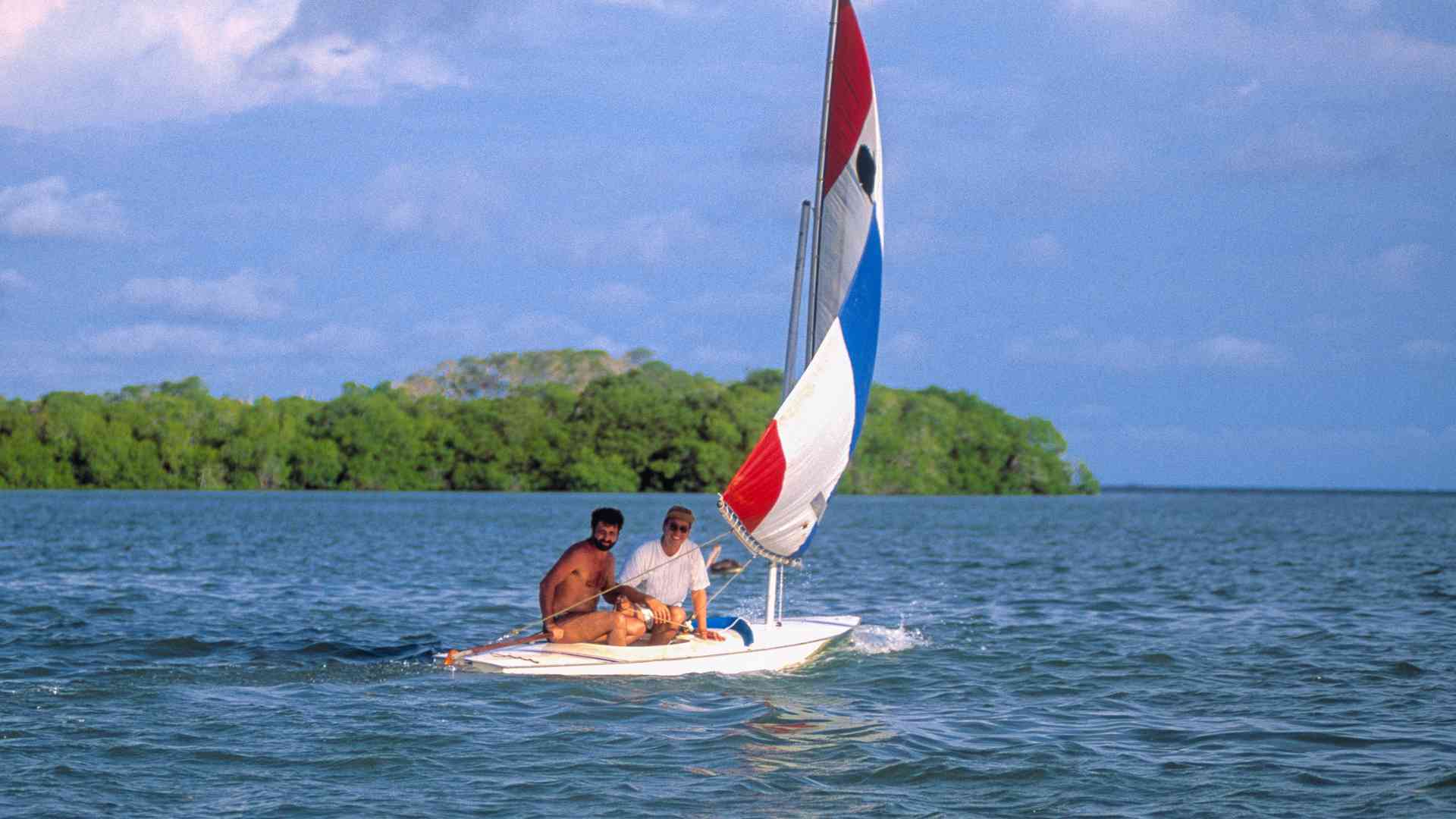
In conclusion, rigging a Sunfish sailboat is a fundamental skill that allows you to embark on exciting sailing adventures. We’ve covered the step-by-step process, from gathering your tools and equipment to performing safety checks before setting sail.
As you gain experience and confidence in rigging your Sunfish, you’ll discover the joy and freedom of sailing. It’s a skill that opens the door to countless adventures on the water, whether you’re exploring new places, racing with fellow sailors, or simply enjoying a peaceful day on the lake.
Remember that practice makes perfect. The more you rig your Sunfish and set sail, the more proficient you’ll become. Over time, rigging will become second nature, and you’ll be able to focus on the pure pleasure of sailing.
So, take these instructions to heart, get out on the water, and enjoy the wind in your sails as you create unforgettable memories aboard your Sunfish sailboat. Sailing offers a lifetime of enjoyment, and rigging your boat is just the beginning of your exciting journey on the water. Happy sailing!
Share How to Rig a Sunfish: Step-by-Step Guide to Sail Away with your friends and Leave a comment below with your thoughts.
Read New Impeller Not Pumping Water: Troubleshoot and Fixing until we meet in the next article.
Similar Posts

What Should You Do If the Motor on Your Boat Catches Fire?
The tranquility of a boating excursion can be quickly shattered by the sudden eruption of flames. A boat motor fire, though rare, poses a serious threat to the safety of your vessel and its occupants. In such a critical situation, prompt and decisive action is paramount to extinguish the fire and prevent further damage or…
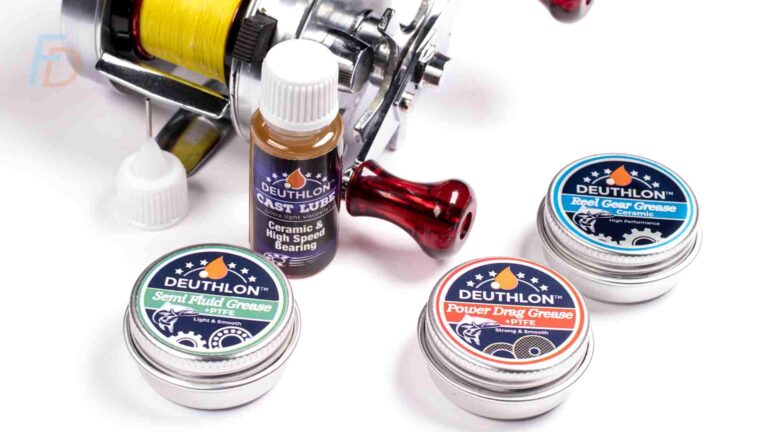
What Are the Alternatives to Fishing Reel Lubricant?
For seasoned anglers, the familiar clink of a well-oiled reel is music to their ears. Yet, the question of what goes into that lubrication often lingers. While dedicated fishing reel oils reign supreme, a world of alternatives beckons, promising smooth performance and potentially lighter wallets. So, before blindly relying on the go-to bottle on the…
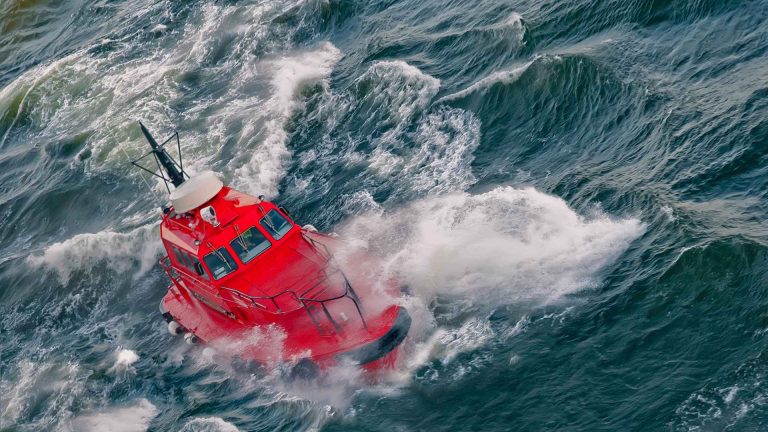
What to Do If Caught When Boating in Stormy Weather: Guide
Boating adventures have a special allure that captivates enthusiasts around the world. Whether you’re cruising along tranquil lakes, exploring scenic coastlines, or venturing into the vastness of the open ocean, the thrill of being on the water is unmatched. However, amidst the excitement, it’s vital to remember that safety should always be the top priority,…

Are Inflatable Boats Safe for Fishing? In-Depth Guide
Imagine gliding across serene waters, casting your fishing line into the depths below, all from the comfort of a compact and lightweight vessel. Inflatable boats have seen a surge in popularity among anglers due to their portability, affordability, and ease of use. These versatile watercraft have opened up new possibilities for fishing enthusiasts, offering a…

8 Differences Between Inboard and Outboard Boat Engines
Picture the heart of a boat—the engine that breathes life into every journey, propelling you through the open waters with a sense of purpose and adventure. Within the realm of boat propulsion, two distinct powerhouses reign supreme: the inboard and the outboard engine. These mechanical marvels are the driving force behind every nautical escapade, each…

How to Calculate Boat Maximum Passenger & Weight Capacity?
Embarking on the open waters, boat owners embrace a realm of boundless possibilities. Yet, within the canvas of these aquatic adventures lies an art – the art of understanding your vessel’s limits. Just as an artist understands the constraints of their canvas, knowing your boat’s maximum capacity and weight limits is pivotal for safe, enjoyable,…
How to Rig a Sunfish Sailboat

Table of Contents
“As an Amazon Associate I earn from qualifying purchases at no additional cost to you”
The Sunfish is arguably the most popular sailboat on the planet. Its popularity is characterized by its inexpensive price, easy portability (probably the only car-toppable sailboat), and easy to rig and sail with just one control line.
But our focus today is on one critical part – how to rig a sunfish. If you just bought your first Sunfish sailboat, sit back and read through this complete step-by-step guide of rigging this kind of dinghy . I hope you already know the parts of a dinghy but if not, well, that’s a topic for another day.
And off we go:
1: Point the sailboat’s bow into the wind. Why? To keep the sail over the Sunfish when it is raised. This will avoid hitting other people or boats with the booms and make it easier to affix the mainsheet.
2: Lay the spars and sail on the sailboat with the mast ring toward the bow.
3: Untie the sail/spar bundle knot and pull the line to undo the bundle. The spars and sail are usually bundled using the mainsheet and halyard.
4: Attach the Boom Sling. Find a spot around fifteen inches below where your halyard meets the upper boom. Pull one side of the Boom Sling around the upper boom and the halyard. Pull the line through the loop to capture the halyard and upper boom. Now, pull the other end of the line to where the lower boom and upper boom meet, and slide the loop over the end of the boom and into the notch formed by the bolt joining the booms.
5: Properly align the mast and boom. Make sure the boom is on the port side of the mast.
6: Ensure the halyard is running directly from the upper boom to the top of the mast and through the hole at the top of the mast.
7: Be sure that the sail is lying towards the port side of the sailboat, and that the mainsheet isn’t wrapped around anything, but just lying below the lower boom.
8: Align the mast, lower and upper booms so that the mast ring is directly over the mast step.
9: Raise the mast and gently place it in the mast step in the deck. Don’t forget to keep hold of the halyard and make sure it’s running neatly through the masthead fairlead from the back to the front.
10: Guide the end of the halyard via the fairlead to starboard of the mast.
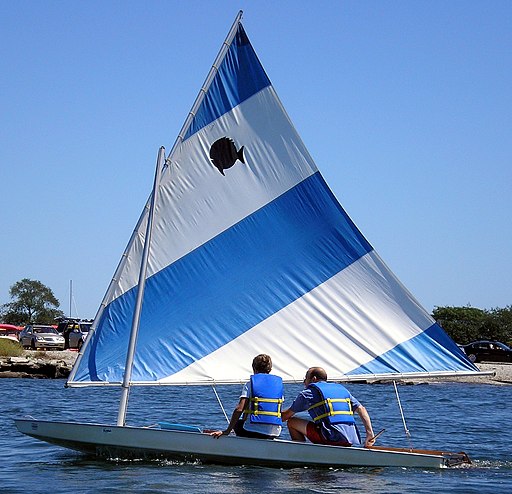
11: Pull the halyard to raise the spar and the sail. Reach down and lift the gooseneck ring so the sail can go all the way to the top of the mast.
12: Tie a cleat hitch in the halyard around 2ft above the cleat and then feed the halyard tail through the cleat hitch and bring it down to fit over the cleat. This helps secure the sail.
13: Ensure the mainsheet runs through all the available sleeves on the boom to stop it from hanging down and catching your neck during tacks and gybes. Tie a cleat knot preferably a figure 8 around the cleat and secure the final turn with an extra twist.
14: Lead the excess halyard tail through the deck fairlead, over the gooseneck and back via the fairlead. Pushing the lower spar down a bit while holding onto the halyard tightly will restrict the spar from rising in harsh winds.
15: Tie another cleat knot on the deck. This one is crucial just in case you capsize as it will keep the sail from falling off the sailboat and sinking. You can tie the extra halyard to the junction of the upper and lower spars with a bowline.
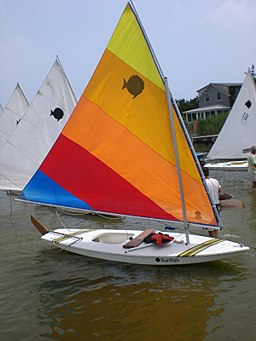
16: Now, run the mainsheet through the ratchet block at the front of the cockpit. Keep in mind that the block only runs in one direction, so be sure to check that first. Tie a stopper knot or figure 8 at the end of the sheet so that it doesn’t get away while you sailing.
17: Tie the other end of the mainsheet to the bridle with a bowline.
18: Fasten the bungee cord affixed to the daggerboard around the mast and then clip it to itself. This is to ensure that the daggerboard stays in the sailboat, as well as supply tension to hold the daggerboard in a partially raised position.
19: Attach the rudder and put the centerboard in its place.
20: Jump in, launch, and go sailing!
And that’s it as far as rigging a Sunfish sailboat is concerned. A piece of advice here is that you need to know at least three types of knots to successfully rig a sailboat: a cleat hitch, a stopper knot or figure 8, and a bowline .
Before you go, let me answer a few frequently asked questions about Sunfish sailboats.
How much is a sunfish sailboat?
A new Sunfish sailboat will set you back at least $4,500 while a used one in good condition will usually fall in the range of $900 to $1,200.
In the case of used boats, there are few things to be keen on. Firstly, a decent used boat should have a smooth hull, uniformly firm with no soft areas, and without deep imperfections or holes.

from PxHere
Secondly, the sailboat ought to be dry sailed, meaning it must have been stored on land, off the ground, and under proper shelter throughout the time when it was not being used. The reasoning behind this is that boats left in water or carelessly stored gain weight quickly, and weight is something you want to keep at a minimum when sailing. I won’t recommend a used Sunfish for competitive sailing unless it’s within a few kilograms of the weight of a new one.
How fast can a sunfish sailboat go?
Now, let’s first be clear that ‘fast’ is always relative because different factors come into play to determine how fast you can go. For instance, a general rule of thumb has it that a lighter boat sails faster than a heavy one. Also, a longer sailboat will record a higher maximum speed than a shorter boat.
What’s more? Boats tend to sail slower in cold waters than in warm waters, and shallow waters decrease boat speed too as the vessel sinks more and has to displace more water out of its way.
Another thing to remember is that Sunfish sailboats are casual-style boats, and so you might want another option if you’re after the need for speed. All in all, a sunfish sailboat can clock 11 knots in favorable conditions. Keep in mind that the official Laser sailboat speed record is 16.8 knots, and Lasers tend to be faster than Sunfish.
How heavy is a sunfish sailboat?
A new Sunfish is typically 120 pounds (54kg).
How to transport a Sunfish sailboat?
Nearly all Sunfish sailboats are cartoppable, thanks to their small and lightweight designs. Simply install the right equipment on the top of your car, such as roof rack and straps, and you’ll find it a doddle transporting your Sunfish. Alternatively, you can buy a trailer and it will save you the work of loading and taking down your sailboat.
How to clean a sunfish sailboat?
Now there’s no formula on how to clean a Sunfish sailboat or any sailboat for that matter. But let me give a few tips on how I do it. I realized that beginning from the topmast to the sails and down to the keel is pretty efficient. Be sure to use non-harmful detergents too.
To clean the sail, first set it down on a clean, flat area. Add some liquid detergent into a bucket of warm water and brush the sail gently to remove debris. You can also clean the sail with your hands, though this process is time-consuming.
As for the hull, I tend to use a pressure washer with a gentle nozzle to remove the worst of the dirt. I then mix a bucket of water and laundry detergent and wash the entire hull using a scrubber or kitchen sponge. Next up is rinsing the whole thing using a clean sponge and plenty of clean water after which I let it dry. Note that your hull (especially fiberglass) might require extra maintenance depending on how dirty and greased it is. Perhaps an extra polish or wax to keep looking nice.
The mast and boom can always do with some scrubbing with soapy water and giving them a good rinse. Bleach can be used to remove tough stains such as mildew.
To cut a long story short, most cleaning involves the use of soapy water, a mild detergent, and a sponge. Just make sure to follow instructions as per the cleaner of your choice.
The Sunfish sailboat is loved by all and the small matter of how to rig a Sunfish is now done and dusted. When the wind is good, just take to the water and have fun zipping about. If you have any additional questions or feedback, feel free to leave a comment below.

PS: Interested in the best drysuits for dinghy sailing ? Check out our guide here!
Happy sailing!

Bill is an ISA Sailing & Powerboating Instructor in Ireland. He writes about all things sailing.
Related Articles that might be of interest to you:

How to Mount a Thru-hull Transducer for a Fishfinder
“As an Amazon Associate I earn from qualifying purchases at no additional cost to you” In order to successfully install a depth finder, fish finder, or any other small electronic device for fishing or water activities onto a fiberglass boat, the first step is proper mounting of the transducer. There

How to Clean Boat Carpets Easily [Complete Guide]
“As an Amazon Associate I earn from qualifying purchases at no additional cost to you” For too long, boat carpet has been a neglected area. Whether it’s the seats in the cabin, the carpet on your pontoon boat’s flooring, or even the cushions in your bass boat’s stern, you’re neglecting

How to Remove Oxidation from Fiberglass Boat – Detailed Guide 2022
“As an Amazon Associate I earn from qualifying purchases at no additional cost to you” Boats are normally painted using a fiberglass resin-based paint known as gel coat. This paint fades after some time due to oxidation meaning that the appearance of the boat will change. As a boat owner,
Leave a Comment Cancel Reply
Your email address will not be published. Required fields are marked *
- Techniques & Guides
- Yacht Equipment
- Personal Gear
Made by Dancing Data.
Disclosure . Terms and Conditions . Privacy Policy
JavaScript seems to be disabled in your browser. For the best experience on our site, be sure to turn on Javascript in your browser.
- Compare Products ( )
- Create an Account


Designed by Alex Byran and Cortlandt Heyniger in 1953 and originally built out of plywood, the Sunfish® is the world’s most popular sailboat, with more than a quarter-million sold by 1995 when it was inducted into the American Sailboat Hall of Fame.
The legendary dinghy’s construction switched from plywood to fiberglass in 1960, and incremental refinements have been introduced over the years. Today’s Sunfish® is essentially identical to the ones that were sailed hard and put away wet back in the 1960s. The net result is an international class that sanctions more than 1,000 regattas a year and a design that’s as equally suited to racing as it is to day sailing.
- Single-line sheeting dramatically simplifies sail rigging and handling.
- Lateen rig will twist-off and depower in gusts.
- Self-bailing cockpit helps keep the cockpit/footwell dry.
- Aft cockpit space accommodates small cooler for outings with friends.
- Deck coaming provides protection when negotiating choppy waters.
- Optional Race package includes race-ready sail with visibility window and additional sail controls to fine tune sail shape. Call us for details and availability.

FREE SHIPPING POLICY
Free shipping on all orders over $99. Does not apply to over-sized items or Hobie items. We consider over-sized items to be any sailboats, kayaks, paddle-boards, and anything over 40" in length. Learn more about our shipping policy by clicking here .


- Forums New posts Unanswered threads Register Top Posts Email
- What's new New posts New Posts (legacy) Latest activity New media
- Media New media New comments
- Boat Info Downloads Weekly Quiz Topic FAQ 10000boatnames.com
- Classifieds Sell Your Boat Used Gear for Sale
- Parts General Marine Parts Hunter Beneteau Catalina MacGregor Oday
- Help Terms of Use Monday Mail Subscribe Monday Mail Unsubscribe
Using a trolling motor on small boat
- Thread starter PK Harvey
- Start date Apr 28, 2021
- Forums for All Owners
- Trailer Sailors
Hi, all. After years of sailing medium-sized Hunters (sold my last of those after a move a few years ago), I'm starting in with a Classic Lido 14, as a boat I can trailer and use to teach my grandsons to handle a sail. I'll be taking the boat out on Lake Buchanan in the Texas hills. There aren't any good choices for a permanent slip for a little boat like this, so I'm going to be launching her new each time out. Here's the issue: The ramp near my property on the lake has an available dock for loading, etc., but it's in close enough quarters that it's not an option to move from the trailer to the ramp under sail. I'd like to add a small electric trolling motor just to move the boat around in the inlet where we'll be launching. I've read some advice that a small gas outboard is a better choice, but in Texas that means registering and all the paperwork for being a power boat. My plan would be to just use the trolling motor to move the boat the 50 or so feet to the dock, and then offload it before I head out on the lake. Wondering how much thrust I'd need on a trolling motor to move a roughly 350 lb. (fully rigged) boat around in those limited circumstances. Thoughts? Thanks in advance for any help.-PK
PK Harvey said: .................... Wondering how much thrust I'd need on a trolling motor to move a roughly 350 lb. (fully rigged) boat around in those limited circumstances............... Click to expand
I am sure a trolling motor will work just fine. My concern would be with the battery when you capsize. I learned on a Lido 14 and those things are super light / stable so moving it around is no issue at all. May I ask why not just use a paddle for the 50 feet or so? Seems like a lot less cost and hassle.
I think the problem paddling a small light boat is the you have to lean to each side to make a paddle stroke and the boat will list as a result. If the main is up the boom will swing back and forth and be annoying not to mention the rudder flopping back and forth. I tried this on my Bandit 15 and it wasn't that effective. I would consider sculling. You could fit a half circle fitting on the transom and once you get the technique down move pretty effectively for 50 feet. Off Center Harbor has some Vids posted on this subject and you get to view a few free.
Of course you could buy an electric motor with a water proof battery like a Torqeedo. I have a 503 on my dinghy. Kayak Trolling Motor - Ultralight 403 A -Torqeedo Electric Outboard with direct drive - Travel 603 - Torqeedo
Okay so.... one more thing to consider. Once you put a motor on it, you have to register it, display a registration number & tags and pay annual registration fees. COST and HASSLE That might be another reason to stick with human power.
"No officer. That's not a motor. It's a blender but I don't have another way to stow it!"
SailingLoto
I used an old transom mount minnkota and small car battery the first couple times I ever went sailing. Worked fine. I had to go 250-300 yards in and out. Zero issues. Light, easy to remove and stow. The battery was from a mid 90s civic and fit directly infront of my trolling motor. Gas was a definite upgrade for me, but you on a small boat, going such a short distance.... I think it would be ideal
sloughsailer
When the motor on my 3000 LB Columbia 22 self destructed I installed an oarlock on the transom and got a long oar. With a little practice I was able to scull anywhere I wanted to go. One windless night I sculled 2 miles against the current without a great deal of effort. Your 14 foot dingy will scull easily.

I used a trolling motor on my 16' AMF Sunbird for years. The 'bird was already titled so that wasn't an issue. But when I sold the 'bird and put the trolling motor onto my 8' Walker Bay, I had a Texas Game Warden give me a warning about registering the Walker Bay. I used a small AGM battery to power the trolling motor. I still have the trolling motor if you want it. Just collecting dust here at Canyon Lake.
I used a 22 lb thrust Minnkota on a Taser to motor out of the dead air in an inlet ramp and get back across the lake if the wind died. Battery was mounted under the mid thwart and a dead-man switch. Do use a dead-man switch for any smaller boat/dingy for safety. (momentary push-on switch).
I've used a really small trolling motor on a boat that weighed 500 lb alone. I can motor around for at least a couple hours on a lawn mower battery.
I use an older 12-volt Minnkota 48LB thrust trolling motor on my Macgregor 26S for electric-only lakes. It pushes me at three knots in light wind. I've used it the whole day (without sailing) at times with six people on board.
I used a 36lb thrust one summer on my SJ21, and it worked great. I would recommend an AGM battery just because of the motion, you don't want to expose the plates during discharge.
Crazy Dave Condon
You have to ask your state if registration and/or titling is required. Virginia requires it even with a trolling motor
George_NJ said: I use an older 12-volt Minnkota 48LB thrust trolling motor on my Macgregor 26S for electric-only lakes. It pushes me at three knots in light wind. I've used it the whole day (without sailing) at times with six people on board. Click to expand
bgstar19 said: Hey George, What size battery (amp- hours?) did you use to motor around all day on your 26S with the 48 lb thrust trolling motor? I've got a 1983 O'Day 19 with a very finicky 5 hp 2 stroke Mercury outboard that failed to start on a number of occasions as I tried to motor back to the crowded marina, making for long frustrating returns to the dock. I'm guessing that a 48 lb thrust trolling motor would work for my sailboat as well based on your experience. Click to expand
Philly2DC2LBI
New to the site, still a sailing newbie relatively as well, this is exactly the conversation I was looking for. I'm on a small, narrow inlet off Barnegat Bay in NJ, have sailed a sunfish for years but recently upgraded size-wise to a used but hardly-used Javelin. Depending on wind/current sometimes I can't tack in/out on the sunfish, so I kept a little paddle with me, but of course that's not an option for a larger boat so I have to figure out best solution. Electric trolling motor seems the best choice, but the range of options is a little overwhelming. I'm assuming I need one that's saltwater rated, but not sure about shaft length/how powerful. Cheapest seems Min-Kota, they are all on backorder for weeks (supply chain problems with the pandemic, apparently), so looking for a used one or I have to drive to a dealer. I see George's tip above on what battery to get - any tips on the battery storage/housing? Any other safety features needed with a battery on board??
Philly2DC2LBI, I don't know what the difference is between the saltwater & fresh water motors, like if it's just the paint? If it was just the paint you could paint it yourself with some Rustoleum or the like. You would want to put the battery by the transom, the trolling motors don't like long cords. I would put some kind of grippy pad to keep it from wanting to slide and maybe a bungie cord to keep it in place for when you heel, or a more permanent battery box install. I buy used all the time, craigslist, facebook marketplace, offerup... I think I paid $75 for my 48 LB thrust troller out of season (the time for deals). Keep an eye out at garage sales & flea markets also. I paid $5 for a 12 LB troller at a Habitat For Humanity store years ago and that thing still works great on my 14' crestliner V hull boat.
- This site uses cookies to help personalise content, tailor your experience and to keep you logged in if you register. By continuing to use this site, you are consenting to our use of cookies. Accept Learn more…
deadfall movie review


IMAGES
VIDEO
COMMENTS
The Sunfish is the most popular boat ever produced! Great for both casual sailing and racing. Explore lakes, bays, even oceans. Compact, lightweight, easy to transport. Ideal for one or two sailors. We offer customization options you won't find anywhere else! We have a large selection of boats, sails and parts in stock and ready to ship.
The consensus was to pull the Sunfish with a 12 foot boat and outboard, then anchor the 12 foot boat and switch to the Sunfish. ... The off the shelf stuff will have the motor mostly trying to whip the water behind the boat. Custom wound motor and a prop designed for the purpose would need less power. Feb 22, 2016 #24 L&VW
The Sunfish is a personal-size, beach-launched sailing dinghy.It features a very flat, boardlike hull carrying an Oceanic lateen sail mounted to an un-stayed mast.. Sunfish was developed by Alcort, Inc. and first appeared around 1952 as the "next generation" improvement on their original boat, the Sailfish.In contrast, the Sunfish has a wider beam for more stability, increased freeboard and ...
Sunfish Builder Chronology 1952 - 1969 Alcort, Inc. (founded 1945) 1969 - 1986 AMF 1986 - 1988 Loveless & DeGarmo, dba, Alcort Sailboats Inc. ... 1997), states that a boat with a BN of less than 1.3 will be slow in light winds. A boat with a BN of 1.6 or greater is a boat that will be reefed often in offshore cruising. Derek Harvey ...
The Sunfish combines easy rigging and manageability for a comfortable and hassle-free sailing experience. This is the sailboat loved by all. Designed in 1952 as the ultimate beach craft, the Sunfish sailboat is still a favourite with all ages. This maintenance free boat holds its resale value thanks to its robust construction, highlighted by hard chines and a flat underbody.
Sunfish Age and Hull Identification. 1.1. If the serial number is on a metal deck plate near the splash rail; there is no storage compartment at the aft end of cockpit; and the boat has (or had) the "old style" rudder hardware (where the rudder attaches via 2 bronze fittings): the boat is pre-1971. The cockpit was redesigned for the 1971 models ...
Sunfish is a 13′ 10″ / 4.2 m monohull sailboat designed by Alexander Bryan/Cortland Heyniger/Carl Meinart and built by AMF Corp., Alcort, Pearson Yachts, and LaserPerformance starting in 1952. ... 1991 - 1997 Sunfish/Laser, Inc. 1997 - 2007 Vanguard 2007 - Laser Performance Change in class rules permitted a new, slightly deeper daggerboard ...
West Coast Sailing is your source for hull and deck fittings for your Sunfish sailboat. Check out our selection of bailers, drain plugs, hiking straps, inspection ports, bridles, gudgeons, bow handles, and more. Protect your Sunfish with a proper Sunfish cover, blade bag, or spar bag. Our covers are waterproof and resist both mildew and UV.
The Sunfish sailboat, known for its simplicity, affordability, and ease of use, can be prepared by following these steps. It was designed by Alcort, Inc. in the United States during the early 1950s and has gained popularity ever since. The design of the Sunfish sailboat has remained largely unchanged, with minor modifications made for better ...
Hold the mainsheet and tiller to control the sailboat. Pro-tip: Before getting into position, ensure the sailboat is stable and properly balanced to prevent accidents or tipping over while sailing. Adjust your position as needed when the wind and waves change for stability and control of the Sunfish sailboat. 4.
Rigging the Sunfish sailboat involves the following steps: - Attach the mast to the mast step on the boat's deck. - Connect the boom to the mast and secure it with a boom vang. - Slide the daggerboard into the daggerboard trunk and secure it. - Attach the rudder to the rudder gudgeons at the back of the boat.
Class legal Mark II sail. 60mm Harken ratchet block. Padded toe strap. Line kit. Laser sailboat drawing. Stop in and take a look at our available Sunfish and Lasers. Bay Sails Marine, located on Cape Cod in Wellfleet, Massachusetts, is a full service boat yard, the exclusive dealer of Alcar boats, and the original pumpout boat manufacturer.
Sunfish Owners Group is formed for all those who seek the camaraderie of sailing, restoring, racing and owning the venerable Sunfish. ... WELCOME TO SUNFISH OWNERS GROUP. For ALL Sunfish Enthusiasts Dec 12, 2020; 1 min; How To Rig A Sunfish Sailboat. 97. 0. Post not marked as liked. Dec 11, 2020; 1 min; Sunfish Sailor Reacts to SUNFISH SAILING ...
A Sunfish has three components: hull, sail, and daggerboard. A Sunfish has three components: hull, sail and daggerboard. The hull is the body of the boat. The sail is what catches the wind to push it along. The daggerboard is a small board that keeps the boat from rolling over when sailing in rough waters or high winds.
Process of Stepping the Mast, Which Involves Attaching the Mast to the Boat's Hull. Stepping the mast is a crucial step in rigging your Sunfish. Follow these steps carefully: Attach the Mast Step: The mast step is a metal fitting on the boat's deck near the bow. Insert the bottom end of the mast into the mast step.
The Most Popular Recreational Sailboat in History. For unmatched simplicity and pure sailing satisfaction, you can't beat the Sunfish sailboat. With a length just shy of 14 feet and a beam just a hair over four feet, these boats strip away the pretense and complexities of bigger vessels and let you connect with the timeless dance of water and ...
3: Untie the sail/spar bundle knot and pull the line to undo the bundle. The spars and sail are usually bundled using the mainsheet and halyard. 4: Attach the Boom Sling. Find a spot around fifteen inches below where your halyard meets the upper boom. Pull one side of the Boom Sling around the upper boom and the halyard.
Sunfish. $5,950.00. SKU. 108. Add to Cart. Thanks to its lateen-style rig, the Sunfish delivers automatic gust control while providing enough canvas to harness zephyrs. Beginners will appreciate the boat's mainsheet-only sail-control set-up, while experts can always learn more about body positioning, balance and light-touch steering from this ...
O'day 19 MK-II Weekender Narragansett Bay. May 14, 2021. #17. George_NJ said: I use an older 12-volt Minnkota 48LB thrust trolling motor on my Macgregor 26S for electric-only lakes. It pushes me at three knots in light wind. I've used it the whole day (without sailing) at times with six people on board.
This is an update video on my progress of converting and old sunfish sailboat to a motorized duck hunting layout boat. Things are going great so far, and I g...
Impressions; At 91 meters in length, Lady Lara is an ultramodern superyacht with sweeping curves and an elegantly balanced profile. Dynamic, sculpted features carry through her ex
Sunfish SAILBOAT to DUCK HUNTING Conversion with a MUD Motor on the WATER!Sub to Ducks Gun Chronicles!!- https://www.youtube.com/channel/UCk6KCRJMpO2Ji-JjA3Q...
The Stunning Ritz Carlton EVRIMA Yacht. Gliding Across Tokyo's Sumida River: The Mesmerizing Zipper Boat. CROCUS Yacht: An 48 Meter Beauty by Admiral. PHI Yacht - Royal Huisma